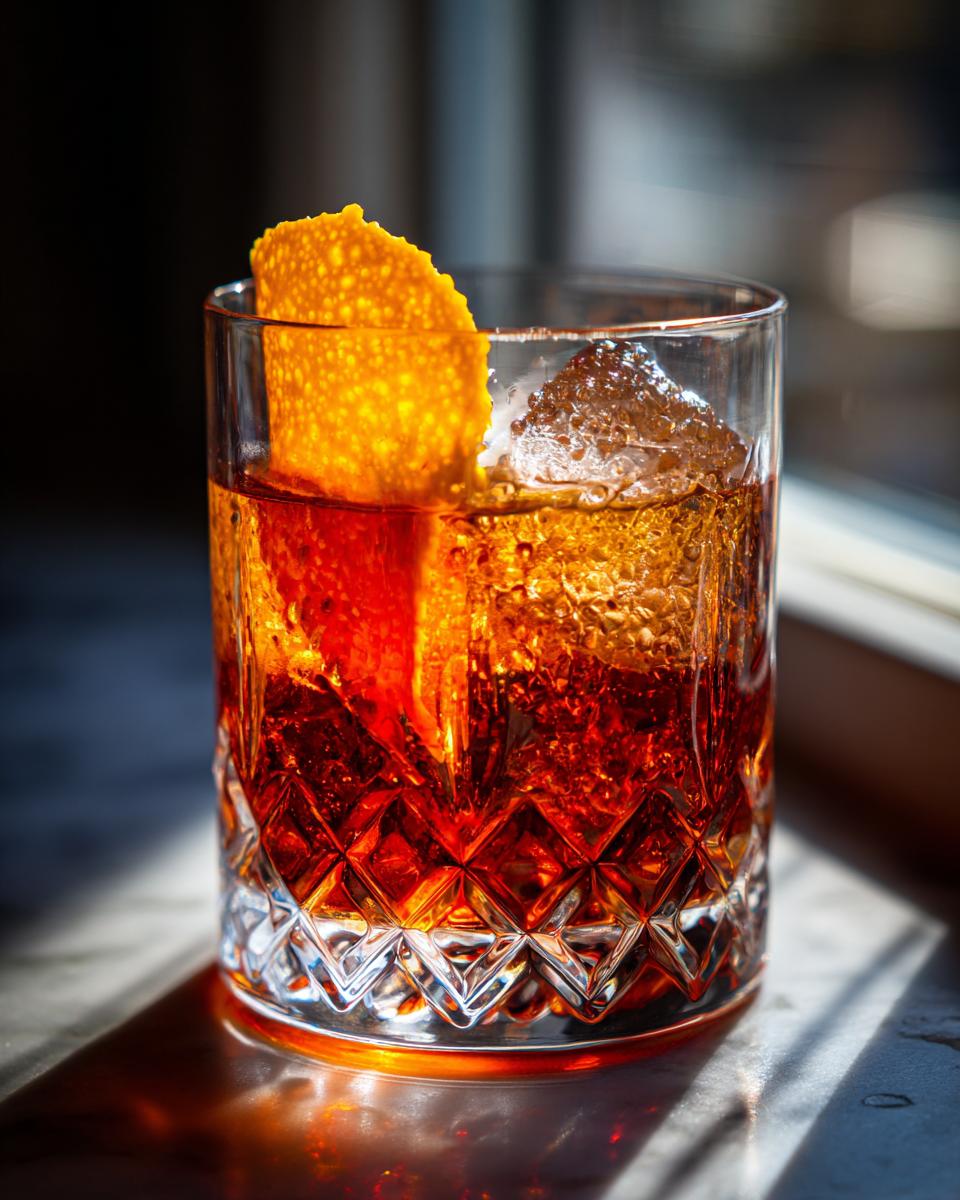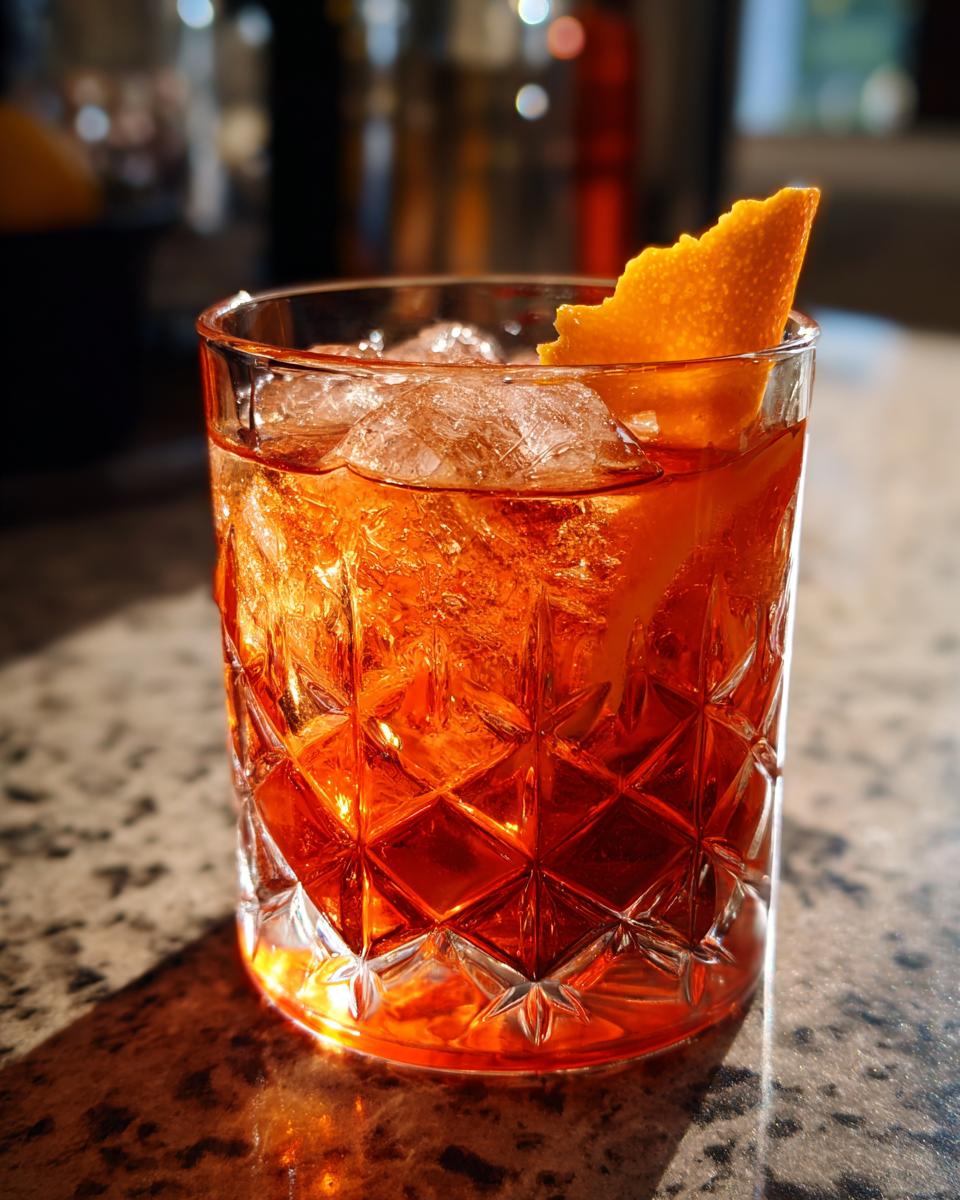Oh, the Negroni! Is there any cocktail that sparks quite as much passionate debate or pure joy as this iconic Italian aperitivo? For me, it’s more than just a drink; it’s a ritual, a moment of sippable sophistication. And if you’ve ever had a Negroni that just… fell flat, or one that sang with a complexity you couldn’t quite pinpoint, I bet dollars to donuts the secret ingredient wasn’t the gin or the Campari, but the vermouth. Seriously, finding the Best Vermouths For Negronis can totally transform your cocktail game. I remember my first ‘aha!’ moment with this drink – I’d always just grabbed whatever sweet vermouth was handy, but then I tried one made by a bartender who swore by his particular choice, and BAM! It was like night and day. That’s when I knew I had to dig deep and share my journey into crafting the perfect Negroni, starting with its heart and soul: the vermouth.
Why Vermouth is the Soul of Your Negroni
Okay, let’s talk about the real MVP of the Negroni – the vermouth! I know, I know, you’ve got your gin and your Campari doing their flashy, bitter dance, but trust me, without the right sweet vermouth, your Negroni is just… *fine*. And we don’t want ‘fine,’ do we? We want *fabulous!* See, vermouth isn’t just some supporting actor here; it’s the whole dang soul of the drink.
Think about it: Campari brings that assertive, beautiful bitterness, and gin offers its own complex botanical symphony. But it’s the sweet vermouth that swoops in to tie it all together. It’s fortified wine, right? So it’s got this wonderful depth from the wine base, but then it’s infused with all sorts of herbs and spices – think bitter orange peel, cardamom, cinnamon, cloves, gentian root… the list goes on and on! This botanical complexity is crucial because it doesn’t just add sweetness; it creates layers. It smooths out the harsh edges of the Campari, harmonizes with the gin, and gives the whole cocktail that rich, velvety mouthfeel. Seriously, picking a good vermouth is like choosing the right foundation for a house – get it wrong, and the whole thing feels wobbly!
I learned this the hard way. There was this one batch of Negronis I made where I just used some old bottle I had open, and it tasted… well, it tasted mostly like bitter booze. Not the complex, intriguing sip I was craving. But then, after I learned more about how Campari interacts with other ingredients, I splurged on a really nice sweet vermouth, and *wowza*. It was like the orchestra finally hit perfect harmony. So yeah, don’t skimp on your vermouth!

Exploring the Best Vermouths For Negronis
Alright, let’s get down to the nitty-gritty – the vermouths that truly shine in a Negroni! This is where the magic really happens for me. You can have the best gin and top-notch Campari, but if your vermouth is just ‘meh,’ your Negroni will be too. Trust me on this one. Over the years, I’ve tried so many different bottles, and some just sing in this particular cocktail. It’s all about finding that perfect balance of sweetness, bitterness, and those gorgeous herbal notes. These aren’t just my opinions; they’re hard-won knowledge from countless Saturday evenings experimenting! I want to share my absolute favorites that make a Negroni sing, moving beyond just the basic bottle you might grab in a pinch. These are the ones that make you pause and savor every single sip, the ones that will have your friends asking, “Wow, what’s in this Negroni?!” You can find more tips on the classic Negroni cocktail and how to make an equally balanced Negroni over here, but let’s dive into the starry players!
The Classic Choice: Italian Sweet Vermouths
When you think Negroni, you’re probably thinking Italian sweet vermouth, and for good reason! These are the OG companions for a reason. They’ve got this rich, complex flavor profile that’s just *made* for this drink. They’re usually a bit deeper, with notes of dried fruit, spices like cinnamon and clove, and a beautiful herbal undercurrent that perfectly complements the Campari’s bite. My go-to is always Carpano Antica Formula. Oh my goodness, if you haven’t tried it, you absolutely must! It’s got this incredible vanilla sweetness that’s not cloying, a deep mahogany color, and a really complex mouthfeel with hints of licorice and bitter orange. It just adds this luxurious velvety texture to the Negroni that’s hard to beat. Then there’s Cocchi Storico Vermouth di Torino – another absolute winner. It leans a bit more into the caramel and baking spice notes, with a lovely gentian bitterness that plays super well with the gin. It feels a little more ‘classic’ in its profile, if that makes sense? And you can’t forget Cinzano Rosso! It’s often considered a more budget-friendly option, but don’t let that fool you. It brings a bright, aromatic sweetness with definite herbal and dried fruit notes that make for a perfectly respectable, and frankly delicious, Negroni.

French Vermouths: A Lighter Approach
Now, don’t sleep on the French! While Italian Vermouths often steal the spotlight for Negronis, a good French sweet vermouth can offer a really interesting twist. They tend to be a bit lighter, sometimes more floral, and might have a different spice profile. Think less heavy baking spices and more delicate aromatics. My favorite here is Dolin Rouge. It’s got this lovely balance – it’s sweet, for sure, but it feels brighter and less intense than some of the richer Italian options. You might pick up notes of honey, citrus peel, and perhaps some lighter, more subtle herbs. In a Negroni, this can be a game-changer if you find the classic ones a *tad* too heavy. It creates a Negroni that’s still balanced and flavorful, but perhaps a bit more refreshing. It’s like listening to a jazz trio instead of a full orchestra – still sophisticated, just a different vibe!
Modern & Craft Vermouths for Your Negroni
The world of vermouth has really exploded in recent years, and there are some seriously cool craft producers out there doing amazing things. These often take a more contemporary approach, maybe using unique local botanicals or aging their vermouth in interesting barrels. If you’re feeling adventurous, this is where you can really play! I’ve had some fantastic Negronis made with vermouths that had unexpected notes of rhubarb, or a pronounced anise flavor, or even a hint of smokiness. For example, there are some American craft vermouths that are just fantastic. They often have a really vibrant, fresh take on the botanicals. One I tried recently had a surprising burst of fresh mint and a zesty citrus finish that made the Negroni incredibly invigorating. Another had a slightly drier profile with a prominent wormwood character, which really amplified the bitterness in a fascinating way. It’s perfect for when you want to shake up the classic formula and discover something totally new. Don’t be afraid to ask your local liquor store or a good cocktail bar for recommendations on smaller, artisanal brands – you might just find your new favorite!
The Negroni Recipe: A Perfect Balance
Alright, so we’ve chatted about the heart and soul, the amazing vermouths, and why they matter so much. But how do you actually put it all together? It’s actually deceptively simple! The classic Negroni recipe is built on a foundation of what we call ‘equal parts.’ That means one part gin, one part Campari, and one part sweet vermouth. Simple, right? This ratio is totally fundamental because it creates this incredible, harmonious balance – no single ingredient tries to hog the spotlight. It’s this perfect equilibrium that makes the Negroni so iconic. The bitterness, the herbal notes, the subtle sweetness from the vermouth… it all just clicks! Check out how to make a bold Negroni with equal parts if you want to dive deeper into this magic ratio.
Seriously, the first time I truly understood the power of that equal-parts ratio, my Negronis went from okay to absolutely sublime. I used to eyeball it, and sometimes it would be too gin-forward, other times way too bitter. But measuring it out precisely, even though it feels almost too easy, makes all the difference. And a little personal tip from me to you: make sure all your ingredients, especially the gin and vermouth, are good quality. You don’t need to break the bank, but picking a solid gin, a decent Campari, and, as we’ve established, a fantastic sweet vermouth, truly elevates this simple cocktail into something extraordinary. It’s the cornerstone of making a Negroni that’s not just a drink, but an experience!

Tips for Crafting the Best Negroni
So, you’ve picked out the perfect vermouth, you’ve got your gin and Campari, and you’re ready to mix up a Negroni that’ll knock your socks off. Awesome! But wait, there are a few little secrets that can take your drink from good to absolutely sensational. It’s the little things, you know? Like how you chill your glass – starting with a nicely frosted glass is a total game-changer. It keeps your drink colder for longer. And ice! Don’t skimp on the ice. Use big, solid cubes; they melt slower and won’t water down your beautiful cocktail too quickly. Trust me, I learned that the hard way with a Negroni that turned into a watery mess way too fast! It’s kind of like how using the wrong ice can ruin even the simplest drink.
My big “aha!” moment came with stirring. I used to just give it a quick swirl, thinking “eh, it’s mixed.” Nope! You’ve got to stir it properly. You want to chill the drink thoroughly without diluting it *too* much. Aim for about 20-30 seconds of steady stirring. You’ll feel the mixing glass get nice and frosty. And the garnish! That orange peel isn’t just for show. Give it a good twist over the drink before you drop it in. That releases those aromatic oils – you’ll smell it immediately, and it adds a whole other layer of citrusy goodness that just perfects the whole experience. It’s all about building those flavors and textures!
Storing Your Vermouth for Peak Flavor
Okay, so you’ve invested in a fantastic bottle of vermouth for your Negronis – yay! But here’s the thing: vermouth is wine-based, and once you open it, it starts to go downhill if you don’t treat it right. Oxidation is the enemy here, turning that beautiful, complex potion into something… well, sad and vinegary. So, what’s the secret? Refrigeration is your absolute best friend. Pop that bottle in the fridge as soon as you’ve poured your first glass. Seriously, don’t leave it on the shelf!
For everyday sipping, just keeping it chilled is usually enough to keep it fresh for a few weeks, maybe a month if you’re lucky. But if you’re a serious Negroni enthusiast and want to keep it pristine for longer, consider an inert gas preserver, like a can of Private Preserve. You spray it in the bottle, and it creates a barrier that keeps the oxygen away. It might sound fancy, but it really makes a difference in preserving that vibrant flavor. Trust me, nobody wants a Negroni that tastes flat or oxidized – it’s the quickest way to ruin a perfectly good cocktail!
Frequently Asked Questions About Negroni Vermouths
Got questions about rocking the best vermouths for your Negronis? I totally get it! This is a cocktail that really lets the vermouth shine, so it’s worth knowing the details. Let’s dive into some common queries.
Can I use dry vermouth in a Negroni?
Technically, yes, you *can*, but it’s not traditional and will result in a very different drink! A classic Negroni uses *sweet* vermouth. Dry vermouth is much drier, less sweet, and has a different botanical profile, usually more herbaceous or floral. If you use dry vermouth, you’ll end up with more of a variation, like a White Negroni (which uses jenever or white spirits and sometimes dry vermouth or other fortified wines). For the classic, stick to sweet!
How long does opened vermouth last?
This is a big one, and super important! Since vermouth is wine-based, it doesn’t last forever once opened. Once you pop the cork, oxidation starts. Properly stored in the fridge, most sweet vermouths are best within about 3-4 weeks. Some people find they can push it a bit longer, especially if they use an inert gas preserver. Just give it a sniff and a small taste before you mix – if it smells or tastes funky, it’s time to let it go.
What’s the difference between Italian and French sweet vermouths?
Great question! Generally, Italian sweet vermouths tend to be richer, darker, and have more pronounced notes of vanilla, dried fruit, and warming spices like cinnamon and clove. They often have a slightly more bitter backbone from botanicals like gentian. French sweet vermouths, like Dolin Rouge, can be a bit lighter, sometimes more floral, with notes of honey, citrus, and subtler herbs. Both can be amazing in a Negroni, just offering slightly different flavor profiles – it’s all about personal preference!
Does the gin choice matter with specific vermouths?
Oh, absolutely! The gin is the third leg of the Negroni stool, so its botanicals interact with both the Campari and the vermouth. A really juniper-forward London Dry gin might stand up better to a richer, spicier Italian vermouth. If you’re using a more floral or citrus-forward gin, you might find it pairs wonderfully with a lighter French vermouth or a craft vermouth with brighter herbal notes. Experimenting with gin and vermouth pairings is half the fun of making Negronis!
Nutritional Information for a Classic Negroni
Okay, so when you’re whipping up a delicious Negroni, you’re probably not thinking about the calorie count, right? It’s a cocktail meant for sipping and savoring! But for those who are curious, a classic Negroni made with 1.5 oz Gin, 1 oz Campari, and 1 oz Sweet Vermouth tends to clock in around 200 calories. You’ll find about 15g of carbs, most of that being sugar thanks to the vermouth and Campari. Fat, protein, and cholesterol? Pretty much zero! Keep in mind these numbers are estimates, and they can change a little depending on the specific brands of gin, Campari, and especially your sweet vermouth that you choose.
Print
Best Vermouths For Negronis
- Total Time: 5 min
- Yield: 1 cocktail 1x
- Diet: Vegetarian
Description
A guide to selecting the best vermouths for your Negroni cocktail.
Ingredients
- 1.5 oz Gin
- 1 oz Campari
- 1 oz Sweet Vermouth
- Orange peel for garnish
Instructions
- Combine gin, Campari, and sweet vermouth in a mixing glass filled with ice.
- Stir until well-chilled.
- Strain into a rocks glass over fresh ice.
- Garnish with an orange peel.
Notes
- The quality of your vermouth significantly impacts the Negroni’s flavor.
- Experiment with different vermouth brands to find your preference.
- Ensure your vermouth is stored properly in the refrigerator after opening to maintain freshness.
- Prep Time: 5 min
- Cook Time: 0 min
- Category: Cocktail
- Method: Stirring
- Cuisine: Italian-American
Nutrition
- Serving Size: 1 cocktail
- Calories: 200
- Sugar: 15g
- Sodium: 10mg
- Fat: 0g
- Saturated Fat: 0g
- Unsaturated Fat: 0g
- Trans Fat: 0g
- Carbohydrates: 15g
- Fiber: 0g
- Protein: 0g
- Cholesterol: 0mg
Keywords: Negroni, vermouth, sweet vermouth, Campari, gin, cocktail recipe, best vermouths

